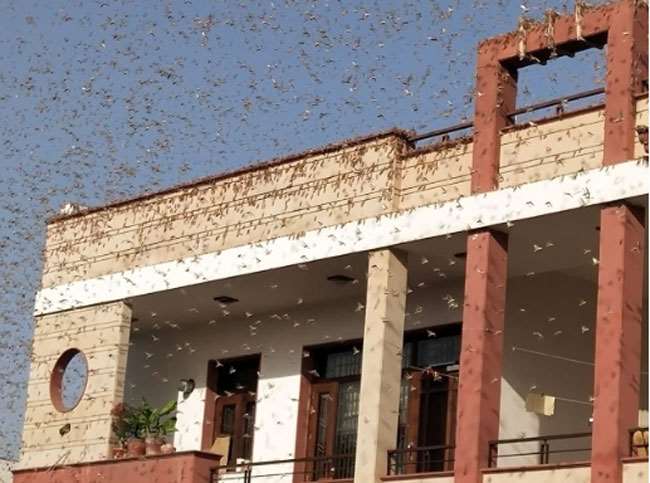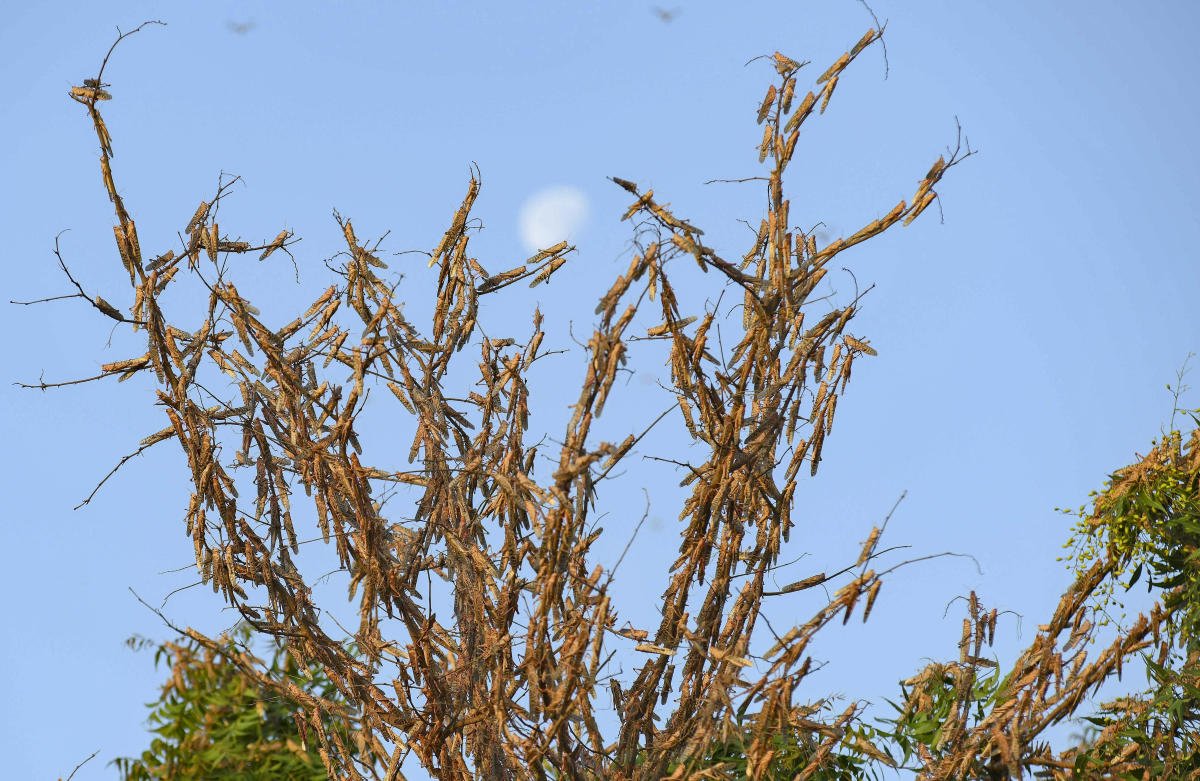While India has been battling the Coronavirus pandemic and the economical crisis brought by the sequel of the outbreak, the country has now been suffering by the invasion of the dangerous menace - Desert locusts as the back to back invasions of the foreign elements have largely been burdening the agricultural sector by devastating the farms and its economy.
Desert locusts have invaded most of the states in Northern and Central India including Rajasthan, Madhya Pradesh, Uttar Pradesh, Maharashtra, Gujarat, and Punjab. These migratory pests are known for damaging the plants and standing crops and the massive invasion of the locusts would also cause major damages to the livelihoods.

Rajasthan is the gateway for the locust swarms to enter India. It came to India on April 11 and since then, the locusts have been threatening the states and its agriculture. The pests enter the country through Pakistan and travel across various states and destroy the crops. The bigger swarm breaks into smaller ones and invade most of the states and cities at the same time. Currently, Rajasthan has seen huge damage as 16 out of 33 districts were affected by the locusts leaving the state's Kharif crop at high risk.
On Monday, the swarms entered several residential areas of Rajasthan's capital Jaipur. The pests entered the localities of Vidhyadhar Nagar and Shastri Nagar of Jaipur. According to the state agricultural department, the swarms entered Jaipur for the first time since the 1990s and these pests could have entered the city because they have no corps to consume as it has already been harvested.
Through the gateway, the group of smaller swarms has already entered the states of Uttar Pradesh, Maharashtra, Madhya Pradesh, and Gujarat and these state governments have been tracking the movements of the dangerous pests using drones and they have deployed fire services to destroy them before they devastate the farms. According to the reports, the extent of loss hasn't clearly known and the governments predict that there could be more damage if these swarms haven't been countered.

The locusts have invaded the eastern part of Maharashtra. The reports stated that in the last two days, about five villages in Vidarbha region have seen major attacks from the swarms where it had consumed plants and standing corps. The state agricultural department has been spraying chemicals on the crops with the view of saving them from the invasion and most of the state governments have been rolling out the measures to combat the invasion of the locusts amid fighting the COVID-19 pandemic.
The Center has last week alerted the states on the locust invasion and it also has alerted Delhi. These locusts travel during day time and posses a huge threat to the plantations and crops which would plummet the livelihoods of farmers. These insects would normally originate from West Asia and parts of Africa and would enter India through Pakistan and these swarms would cover about 150kms a day and rest on trees after sunlight.
They can be able to breed rapidly and the enormous amount of the insects in a swarm would produce terrible damages. Usually, they would invade India around June-July and for this year, they invaded much early with large numbers. The experts have predicted that if the invasion went uncontrollable, it would have rapid growth in their population and they can devastate the moong cereal crop worth more than Rs 8,000 crore.

According to the reports, the desert locust has been considered as the most dangerous and destructive migratory pest in the world and a swarm that stretches for one square kilometer can have 80 million locusts, which is really huge and threatening numbers. Countries like Iran, Pakistan, India, and the countries in East Africa could witness more damages caused by locusts and the pests have damaged millions of hectares.
The Food and Agriculture Organization (FAO), the United Nations agency, said that the locusts threaten people's livelihoods, environment, food security, and economic development and last Friday, it has stated that India and Pakistan would see more risks due to the insects and impact of this year could be more devastating than the last year, alarming the government to grip up the fight against the back to back invasions that have been possessing more menaces to the country.









Comments